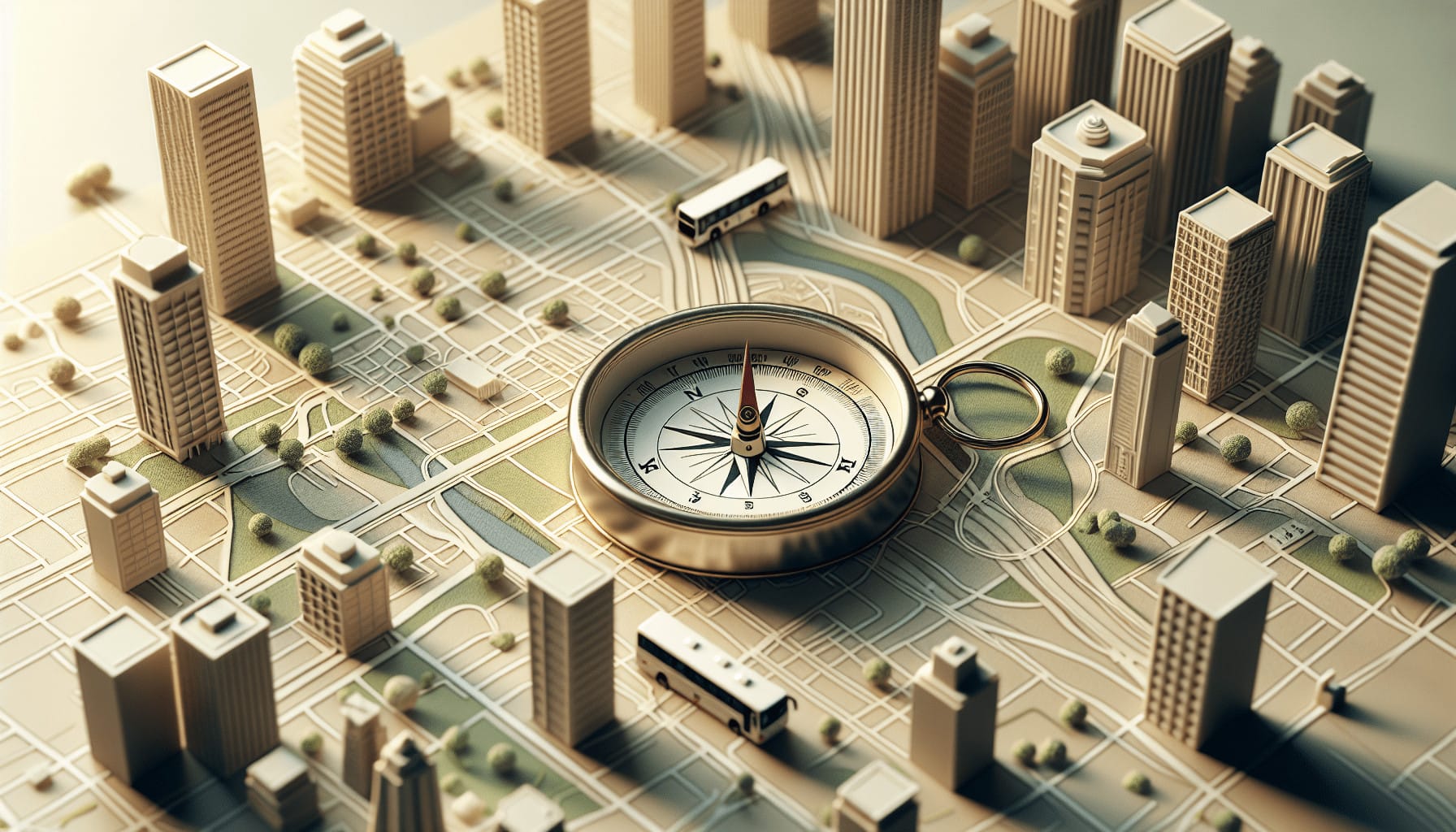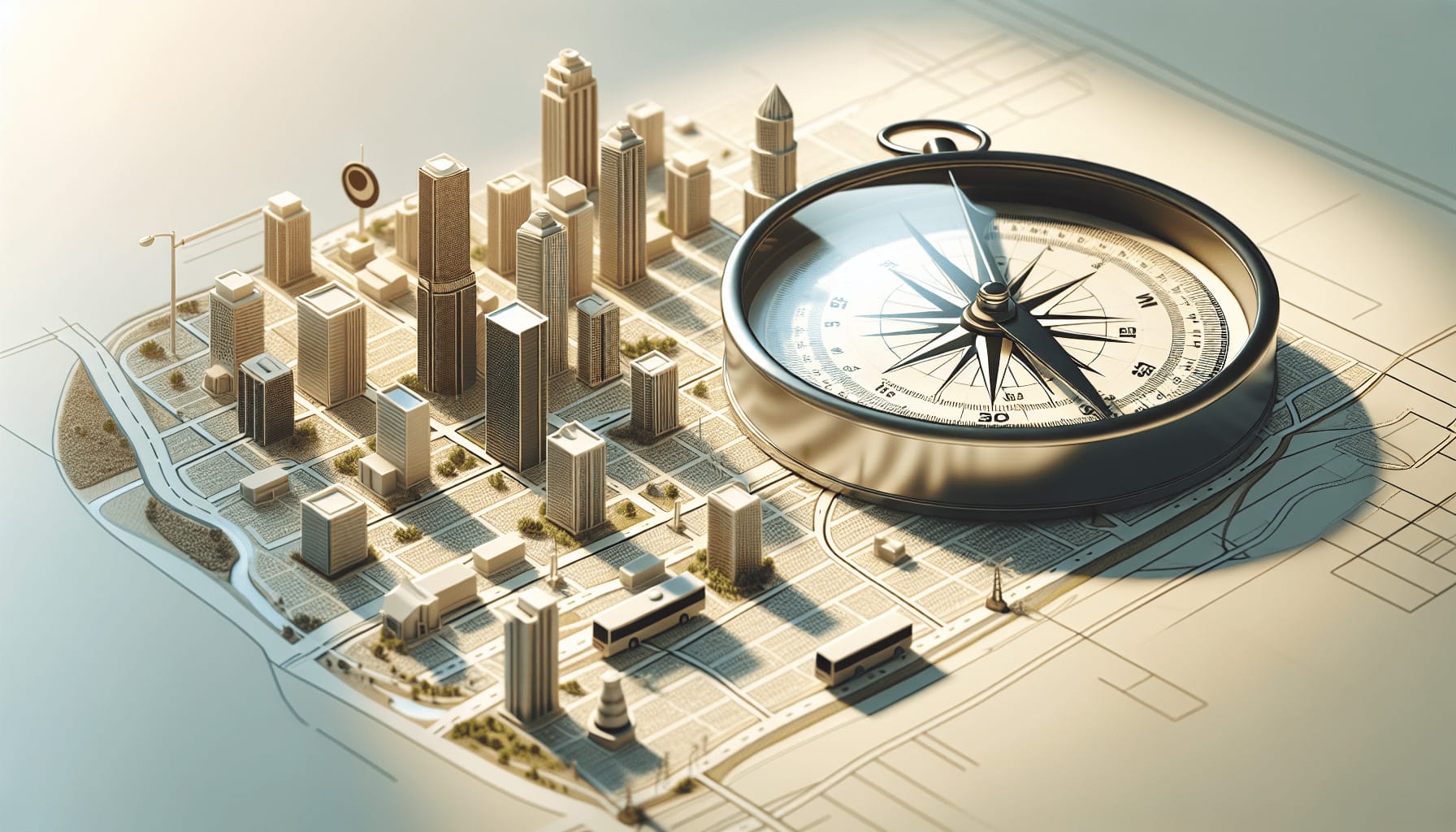Have you ever found yourself standing on a bustling street corner, a little lost, and feeling overwhelmed by the towering buildings around you? Urban landscapes can often feel like a concrete maze, especially if you are unfamiliar with the area. But fear not, because learning basic navigation skills can make your journeys through cityscapes not only more manageable but also enjoyable. Being capable of finding your way in an urban environment is an essential skill that is more attainable than you might think.

Understanding the Urban Landscape
Navigating through a city requires more than just following road signs or relying on GPS. Cities are constantly evolving with new roads, constructions, and routes, making it crucial for you to understand the landscape around you. Comprehending how urban areas are structured can demystify the chaos and provide a grounding point for your travels.
Key Elements of Urban Areas
Cities are made up of various elements such as streets, squares, parks, and landmarks. These components form the basic structure of any urban area. Familiarizing yourself with them will help guide you through the environment with ease.
| Element | Description |
|---|---|
| Streets | The roads that connect various parts of the city. Understanding their grid or layout is important. |
| Landmarks | Notable buildings or monuments that are easy to spot and serve as navigation points. |
| Squares | Open areas, often surrounded by buildings or roads, significant for orientation. |
| Parks | Green spaces within the city that provide clear reference points amidst urban sprawl. |
Learning to recognize and utilize these elements can significantly enhance your navigation skills.
Developing a Mental Map
Creating a mental map of the area you are in is a powerful tool for navigation. This involves building an internal representation of your surroundings that helps you visualize the spatial layout, aiding you in finding your way more effortlessly.
How to Build a Mental Map
Start with identifying major roads and landmarks. Make note of how streets intersect and orient yourself according to the direction you’re walking. Gradually, as you become more familiar with the area, fill in the smaller details like alleyways and less prominent streets.
Focus on repetitive walking routes; familiarity breeds confidence. Over time, the more you move through an area, the richer your mental map will become, making you more adept at navigating not just that place, but unfamiliar sections of other cities too.
Reading and Understanding Maps
While technology has introduced roadmaps to our devices, the ability to read a paper map is fundamental and offers a broader perspective on location and distance that a small screen cannot.
Tips for Effective Map Reading
-
Orient the Map to Reality: Hold your map so it aligns with what you see around you. This alignment between paper and reality helps you make sense of directions and distances more accurately.
-
Learn the Symbols and Legends: Maps come with symbols and legends, which provide the meanings of different icons and color codes. Understanding these will aid in easily identifying key features.
-
Measure Distances: Knowing how to gauge distance on a map can help you plan trips and estimate time more effectively. Most maps have a scale for this purpose.
These skills are indispensable and can be your saving grace when technology fails or offers faulty directions.
Using Technology wisely
Technological advancements like GPS and navigation apps have revolutionized how we travel. However, it’s important to use these resources wisely to avoid becoming overly dependent on them.
Best Practices with GPS and Navigation Apps
- Double-Check Directions: Use more than one app if unsure; they can sometimes offer different routes or information.
- Save Offline Maps: This is handy in case of connectivity issues or battery drain.
- Familiarize with the Interface: Understanding the functionality of your navigation app maximizes its utility and reduces reliance on real-time internet access.
Keep in mind technology offers assistance rather than replacement for understanding your surroundings.

Getting Comfortable with Public Transport
Mastering public transport can significantly cut down travel time and costs in an urban setting. Buses, trains, and subways can whisk you across cities, but understanding how to use them effectively is key.
Understanding Transit Systems
Each city has its own unique transit system with different rules, fare systems, and routes. Familiarize yourself with the system in your area by collecting maps, asking locals, or accessing online transit resources.
| Mode of Transport | Typical Features |
|---|---|
| Bus | Flexible routes, multiple stops, can be slower but offer extensive coverage. |
| Subway/Train | Fast travel across large areas, limited stops, less affected by traffic. |
| Tram/Light Rail | Operate above ground, generally slower than trains but more scenic. |
Learn peak travel times, ticketing methods, and confirm your specific route beforehand for a smoother experience.
Enhancing Observation Skills
Observation is an underrated skill when navigating urban areas. Being attentive not only helps you find your way but can also enrich your experience with the city’s culture and lifestyle.
What to Observe
- Street Signs and Traffic Lights: These provide direct and immediate information important for safe navigation.
- Landmarks and Unusual Buildings: Notable points that stand out can guide you back in the right direction.
- Crowds and Movement Patterns: Understanding the flow of people can reveal popular routes or help avoid congested areas.
With sharp observation, you can rely more on your instincts and less on specific directions.
Playing the Role of a Local
Sometimes blending in and behaving like a local can be your best navigation strategy. Engaging with your environment like someone who lives there fosters a natural sense of direction and ease.
Tips for Acting Like a Local
- Walk with Confidence: Even if unsure, act decisively. Predators prey on the lost look; act as if you belong.
- Dress Comfortably: Avoid looking like a tourist; dress in a way that blends with local attire.
- Learn Key Phrases: A few words or phrases of the local language can help you ask for directions effectively.
Adaptability is crucial, so don’t hesitate to ask locals for directions or insights on the best places.
Planning Ahead
Planning your routes ahead of time is one of the most practical urban navigation strategies. Understanding the layout of your destination in advance can greatly optimize your travel.
How to Plan Efficiently
- Identify Destinations and Points of Interest: List the locations you want to visit and check their proximity to each other.
- Consider Timing and Weather: Different times of day and weather conditions can affect travel times and routes.
- Backup Plans: Always have an alternative route or mode of transport in mind in case of disruptions.
Pre-planning doesn’t only help in keeping you consistent with your schedule but also reduces stress and uncertainty.
Understanding Urban Spatial Concepts
Urban spatial concepts involve understanding the layout and organization of a city, including the zoning and functional aspects of neighborhoods and districts.
Key Concepts to Understand
- Grid Layout: Many cities are designed in a grid pattern, which simplifies navigation with its predictable structure.
- Districts and Neighborhoods: Each area may have its own unique characteristics, showing what to expect in terms of facilities and culture.
Having an understanding of these concepts helps to provide context for your journey and guides more thoughtful decision-making.
Practicing Regularly
Like any other skill, navigation improves with practice. The more you engage with an urban space, the more adept you become.
Ways to Practice
- Explore New Areas: Don’t confine yourself to well-trodden paths; occasional detours help build versatility.
- Challenge Yourself: Try navigating without using maps or GPS occasionally to test your skills.
- Reflect on Experiences: Reassess your journeys regularly to identify areas of improvement or new observations.
Continuous practice builds confidence and hones your innate navigation ability, making any city feel like home sooner.
Urban navigation may appear intimidating at first, but with the right skills, mindset, and enthusiasm to learn, the concrete jungle becomes a sprawling adventure waiting for you to master. Whether you are exploring a new city or seeing your own through fresh eyes, these skills make every urban endeavor an exploration you can undertake confidently.
